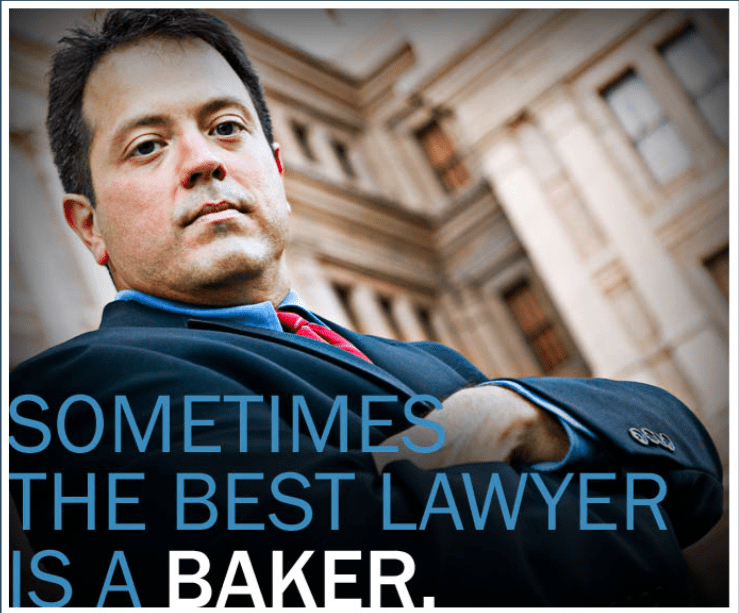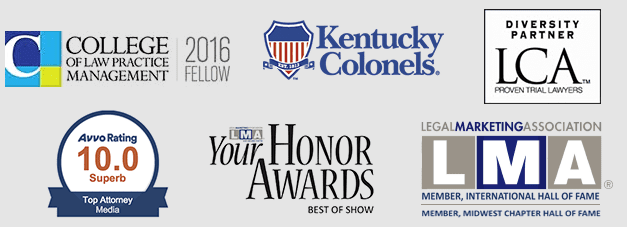Ross’s Top 10 Law Firm Domain Name Mistakes (Part I)
What’s Your Law Firm’s Domain Name? YourName.com
Back in the mid-90s, we were just starting to develop the first law firm websites.
As Marketing Partner of Ungaretti & Harris in the mid-1990s, I remember the early meetings in 1995 when we were trying to figure out what domain to use for our first website. We felt that “Ungaretti” was too hard to remember and spell, so we considered using the firm’s initials, i.e.: uh.com.
Of course, we were concerned that “uh” sounded more like stammering than a law firm, so we decided to go with uhlaw.com, which is what they were still using until getting acquired recently by Nixon Peabody. (It never occurred to us that years later simple two-letter domains like uh.com could become worth $1 million.) Back then domain names cost $35-$50/year, so we didn’t just go around buying up all the permutations. (Today, they’re around eight bucks each.)
The point is, websites were a completely new marketing medium. We were simply struggling to make sense of it all, so committees made decisions based upon the best information available. Today, 20+ years later, we wouldn’t make some of those choices; few of us could have predicted how the Internet would change our lives and practices.
The larger point is — websites have become a mature medium, and many firms haven’t bothered correcting some of those old, legacy decisions. So now is a good time to go back and repair any old mistakes that continue to interfere with your targets easily finding you.
Here are the Top 10 Most-Common Domain Name Mistakes — and how to fix them:
1. You still need www.
In a clean incognito Internet window that won’t automatically autofill your correct website URL, type in your existing name without “www.” (e.g. simply “firmname.com”). If it sends you to a “can’t find” error message, tell your IT people to change it. It’s an easy fix but I’d guess around 10% of firms never got around to setting it to forward automatically.
2. Your firm domain name isn’t your street name.
That is, if your name is “Smith Wachowski & Jones,” no offense to Ms. Jones but everyone calls you “Smith Wachowski.” Your primary domain name should be SmithWachowski.com. If it isn’t, change it. For example, many years ago we counseled the Louisville law firm Goldberg Simpson to change from the non-intuitive GSAtty.com to the simple, easy-to-spell GoldbergSimpson.com. [Capitalization doesn’t matter, but I’m going to use it in this article to help distinguish the various URLs.]
Some firms with hard-to-spell names opted for abbreviations of one or more names, e.g. Changing SmithWachowski.com to something like SmithWach.com. Don’t get cute.
Connecticut’s fine Pullman & Comley firm uses PullCom.com. It’s reasonable to imagine that at some time in the distant past, a marketing or technology committee felt that the uncommon “Comley” was likely to get confused (for example as “Connelly”) and decided that PullCom was easy to spell and remember. This would have seemed eminently reasonable at the time, even though PullmanLaw.com might have been an easier alternative. Of course the PullmanLaw.com URL is long gone, as is the cyber-squatted PullmanComley.com. (I’d sue to get it back.) Then I’d use PullmanLawFirm.com instead, which is still available.

An exception would be when the abbreviation is so well known that it has secondary meaning, like MoFo.com. That’s OK, because within its target audience(s), MoFo is a sufficiently understood shorthand for Morrison Foerster — as long as morrisonfoerster.com also works. And there aren’t a dozen other law firms (e.g. DLA) that can do that, although I’d suggest that the S-adding Canadian firms can — e.g. Oslers, Goodmans, Blakes, McCarthys, etc.
3. If your name is taken, add “law.”
If you have an unusual, strong, or memorable first name, that’s probably what The Street calls you — think Wachtell, Orrick, Jenner, Winston, Cravath, Cadwalader, etc. You should be able to find those firms by typing firstname.com. Of course, if you didn’t buy it decades ago, your name is probably long gone.
Start by adding “law” after it. Let’s use Wachtell Lipton as our example — great firm, great name. That is, WachtellLaw.com.
If that’s gone, the next choice would be to add “Lawyers” after your firm name.
Then try adding “LawFirm” after your name:

Finally, I’d add “attorneys” after it, especially if your name ends in one or two Ls, like Wachtell, or our client Tucson’s Waterfall law firm, where we opted for waterfallattorneys.com rather than waterfalllawfirm. (Three Ls in a row is just begging to be mistyped.)

4. Don’t forget the permutations.
You may not need to link every single one of them to each lawyer’s email address, but e.g. we should be able to find the Wachtell law firm through any of the following domain names, because they also seem to like using “Wachtell Lipton.” At just $8 per year, I generally recommend buying them all:
- wachtell.com
- wachtelllipton.com
- wachtellandlipton.com (if they had only two names)
- wachtelllaw.com
- wachtelllawfirm.com
- Etc.
5. If your first name is too common:
In that situation, use the second name too. JonesDay can’t be simply “Jones”; it’s too generic. That’s obviously why they’re “JonesDay” and jonesday.com. Similarly, Baker & McKenzie can’t be simply Baker — there are too many other prominent “Bakers” out there already. Baker Donelson. Baker Botts. Baker Robbins. Baker Daniels [since merged with Faegre]. This, of course, is why Baker & McKenzie historically used Bakernet.com. I guess that’s OK, although how many clients would instinctively type “Bakernet?”
They presumably chose that URL because (1) “McKenzie” can be easily misspelled (see rule #10, next week), and (2) BakerLaw was already taken. They’ve recently switched to BakerMcKenzie.com. Of course, the misspelled BakerMcKinsey.com and BakerMcKinzie.com should also work. At $8 per year per domain, go nuts. Splurge.
BTW, speaking of the many Bakers — “Baker” is an interesting name/noun/occupation. I think one of them should use something like this, below.






